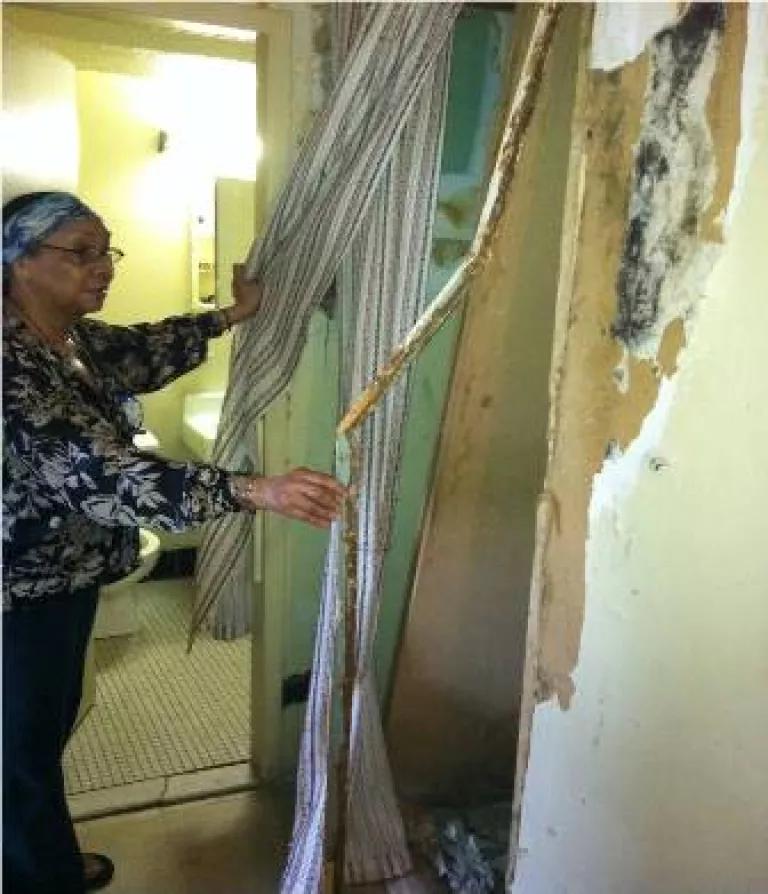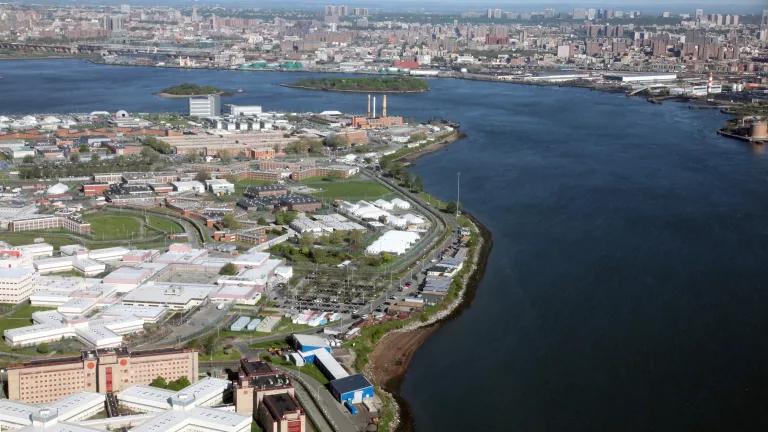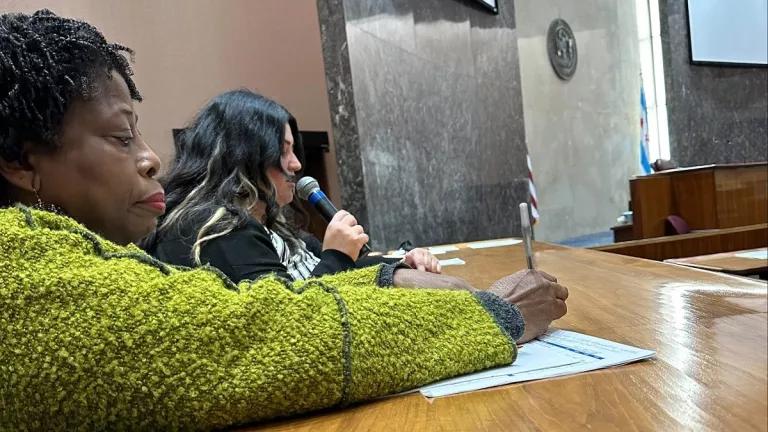
When Hurricane Sandy tore through New York City on October 29, 2012 it left in its wake thousands of people who are still struggling to recover. The images seared into our collective memory from the days following Sandy are those of communities with devastated or damaged homes, and others without power, heat, and water.
The grim reality is that the storm disproportionately impacted our city’s most vulnerable populations – low-income people, people of color, and the elderly – in communities that are already overburdened with an unfair share of toxic pollution and health problems. With the prospect of more Sandy-like storms in the future, we are afforded the opportunity to learn from its impact on our vulnerable communities and to take affirmative steps to protect them.
Impacts of Hurricane Sandy and Future Storm Events on Public Housing Residents
We are only beginning to fully understand how Sandy disproportionately impacted New York’s most needy and vulnerable populations living in public housing.
More than 400,000 New Yorkers reside in the New York City Housing Authority’s (NYCHA’s) 334 public housing developments, making NYCHA the largest public housing authority in North America. If NYCHA was a city, it would rank 21st in population size in the United States and would make up 4.9% of New York City’s population. For many of New York’s neediest residents, public housing is the only option for putting a roof over their family’s heads.
Unfortunately, during Sandy, approximately 80,000 public housing residents in 402 NYCHA buildings lost power, heat, and hot water. Power wasn’t restored in many of the buildings until Wednesday November 14th, more than 2 weeks after the storm.
Even though they now have electric, many are still awaiting the restoration of heat, hot water, and elevator service (some NYCHA buildings are 20 floors high) as cold weather appears to be heading our way. Newly-elected Assemblyman Hakeem Jeffries, said, "The failure to adequately provide heat, hot water and electricity in NYCHA buildings in a timely fashion is a scandal that is growing in proportion by the day."
Moreover, with well-documented rampant mold and moisture problems already plaguing NYCHA housing, it remains to be seen whether the water damage suffered by NYCHA housing will have far-reaching health impacts for residents with respiratory illnesses. Community-based groups such as Manhattan Together, an interfaith organization that organizes in public housing across New York City, have worked directly with tenants, public officials, and agencies to address the long-standing mold and moisture problems that have become a symbol of the decline of our city's housing safety net.
The mold and moisture problems in NYCHA buildings also present a significant health threat. A 2011 Institute of Medicine (IOM) of the National Academy of Sciences report on climate change and its impact on the indoor environment and health concluded that extreme weather conditions associated with climate change may lead to more infiltration of water into indoor spaces and that dampness and water intrusion create conditions that encourage the growth of fungi and bacteria and may cause building materials to decay or corrode, leading in turn to chemical emissions. The IOM report also stated that there was strong scientific evidence linking the presence of moisture and mold in indoor environments to the exacerbation of existing respiratory conditions, such as asthma.

With increased climate-related storm events, we can expect a significant increase in mold and moisture problems in indoor environments citywide, and especially in the public housing community. With more than 8.4 percent (370,000) of children and 9.3% (more than 1.1 million) of adults already suffering from asthma in New York State, we can expect that the long-term impact of storms like Sandy will make it harder for thousands of New Yorkers, especially those living in public housing, to breathe.
Opportunities exist to improve public health while mitigating or adapting to alterations in indoor environmental quality induced by climate change. We must ensure that monies are available to ensure that public housing buildings are resilient to climate-related storms that may allow for moisture intrusion. Moreover, steps must be taken to properly remediate storm-related water and moisture problems in the buildings.
Pollution Consequences in Environmental Justice Communities
More than 600,000 people live and work in six communities – Sunset Park (Brooklyn), Newtown Creek (Brooklyn/Queens), Brooklyn Navy Yard (Brooklyn), Red Hook (Brooklyn), South Bronx (Bronx), and Kill Van Kull (Staten Island) – that are designated as Significant Maritime and Industrial Areas (SMIAs) by the City of New York. These are densely-populated areas directly adjacent to heavy industrial facilities and polluting infrastructures. These SMIAs are also all located in hurricane Zone A, making them particularly vulnerable to Category 1 storm surges.
Since 2010, the New York City Environmental Justice Alliance (NYCEJA) has highlighted the threats present in these SMIA communities. NYCEJA documented the long history of heavy industrial uses and toxic pollution in the communities and performed demographic analysis demonstrating that the majority of people living in these communities are low-income people and people of color. The communities are hosts to Superfund sites, toxic waste facilities, sewage plants, landfills, and other chemical/waste storage facilities. One major concern in the wake of Sandy is whether all the toxic pollution stayed put in these communities or whether contamination has spread.
During Hurricane Katrina which devastated the Gulf Coast in 2005, floodwaters containing pathogens from raw sewage and toxic contaminants from oil spills, pesticides, and hazardous waste poured into neighborhood streets, leaving behind thick sediment inside homes, in parks, and on lawns. A NRDC study demonstrated that these sediments contained high levels of toxic chemicals that could pose health risks if people, especially to children, were exposed to them.
We need to make sure that this and future storm events don’t create new toxic legacies in the City’s densely-populated industrial waterfront communities. It’s also important that we learn from Katrina and ensure that these vulnerable communities are more climate adaptable and resilient. Moreover, we need to ensure that of the billions of dollars that will go towards building infrastructure to protect the City from future storm surges go towards protecting these vulnerable communities.



